Become a Zoollower, now with 3x2 for the first members. Find out here!
The giant otter (Pteronura brasiliensis), the world's largest otter species (up to 1.8 metres long) is seriously threatened. It's classified as Endangered on the IUCN Red List (according to its estimates, there are around 6,560 specimens left in South America). It currently lives discontinuously in the Brazilian Amazon, adjacent regions such as French Guiana and Suriname, and in other countries such as Peru, Colombia, Ecuador, Paraguay and Bolivia.
In Argentina, this important predator of the aquatic environment became extinct, probably due to a combination of factors such as habitat modification, pollution or poaching. Zoo Madrid has therefore joined forces with the Rewilding Argentina foundation, which works to reverse the extinction of species and recover ecosystems, in its impressive project in the Gran Parque Iberá, in Corrientes (Argentina), supported by the National Geographic Society.
Nima, one of the five giant otters born in 2020 at the Zoo, travelled to Iberá in January to join the male Coco in a pre-release corral inside the National Park, where she will learn to fish. If she reproduces successfully, the pair will be released with their litter in the great wetlands of Corrientes. All this with the aim of recovering this extinct species in the Andean country.
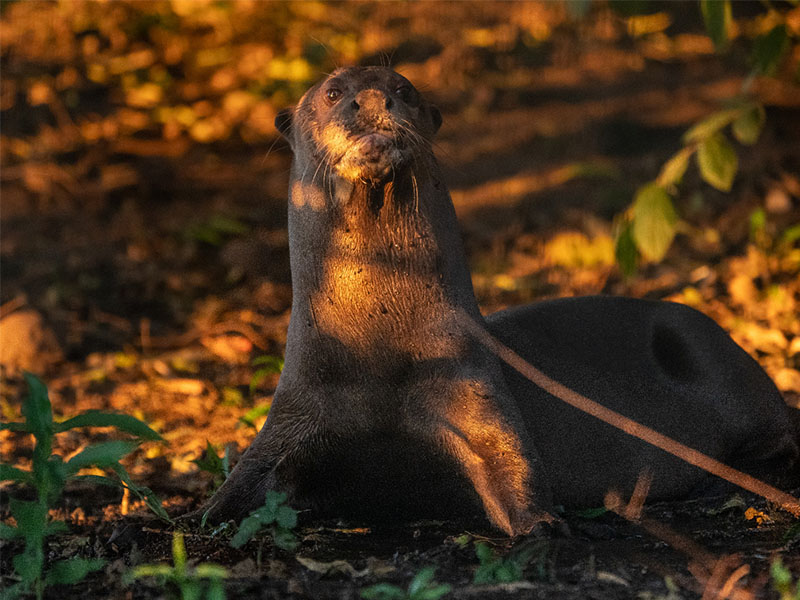
Rewilding Argentina is a foundation committed to the recovery of extinct or depleted species in different areas of the South American country. Its aim is to recover complete and functional ecosystems and promote the development of restorative economies for the benefit of wildlife and local communities. Founded in 2010 by Argentine conservationists and heir to the legacy of Tompkins Conservation, it collaborates with various entities and organisations to achieve its mission.
Its work involves the recovery of emblematic species such as the jaguar, ocelot, collared peccary, guanaco, giant anteater, giant otter and huemul, among others.
Some of its most outstanding figures are:
national and provincial created or expanded in Argentina
with reintroduction projects. 10 species with research or active management projects
protected hectares and 100,000 km² of Argentinean sea protected
impacted in Argentina (Iberá marshes, Gran Chaco, Patagonian steppe and Argentinean Sea)
The Gran Parque Iberá in Corrientes, Argentina is Nima's new home. It is a large protected area that combines the Iberá National Park and the Iberá Provincial Park. With a total area of approximately 1.3 million hectares, the park is home to a diversity of ecosystems, including wetlands, rainforest, bush, grasslands and espinales. It is home to a variety of endangered species, including the collared peccary, the marsh deer, the aguará guazú, the pampas deer, the caiman and the otter. In addition, the Gran Parque Iberá offers a unique environment for the reintroduction of locally extinct species, such as the anteater, tapir, jaguar and otter.
Let's learn more about Iberá and other projects of Rewilding Argentina:
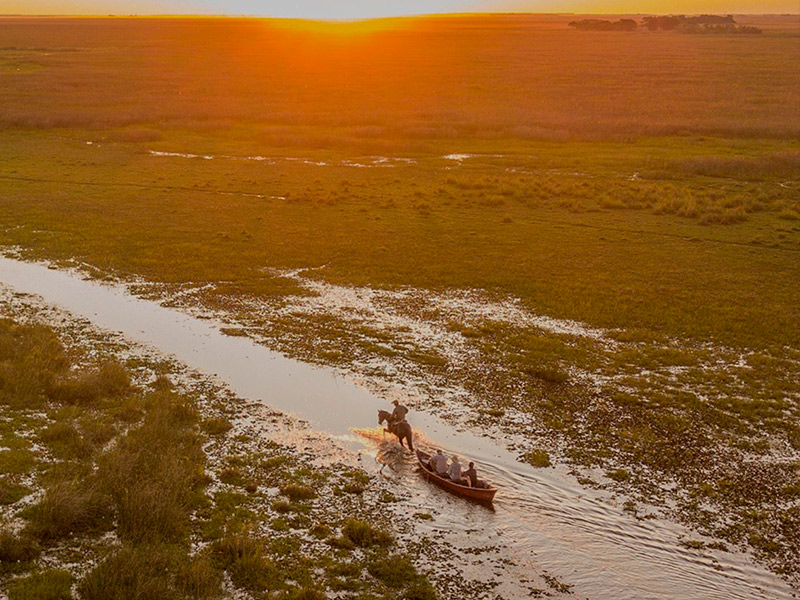
It was made possible thanks to the collaboration of Rewilding Argentina (and its predecessor Tompkins Conservation), who acquired land and worked together with the administrations for its creation. It has become an engine for development, promoting nature and wildlife tourism and the values of local cultures. Access gates have been established and road infrastructure has been improved to facilitate visits.
In addition, key species populations are monitored and ecosystem conservation strategies are implemented.
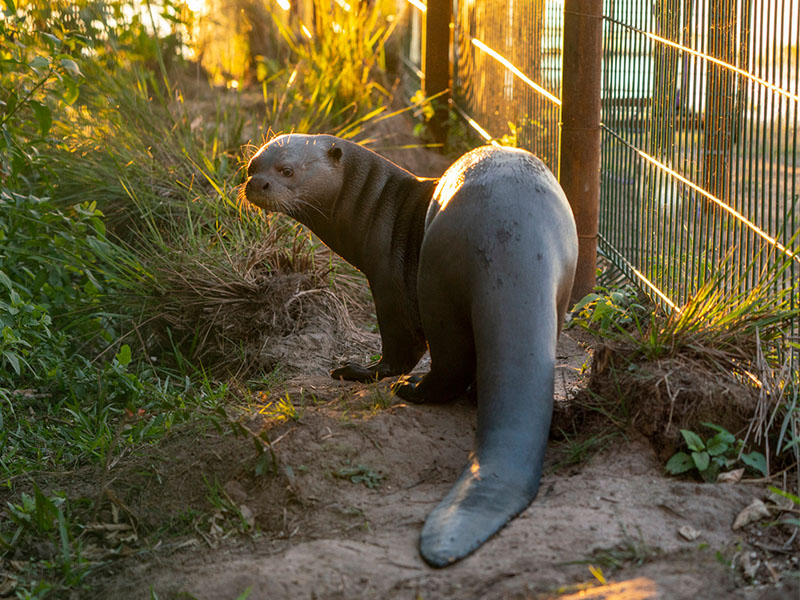
Before Nima, other giant otters have been reintroduced in Iberá. In 2019, a female called Alondra and the male Coco joined the project. In May 2021, their 3 cubs were born, forming the first giant otter family after their extinction in Argentina. In 2022, Alondra passed away, leaving Coco and her three cubs without a breeding female, until the arrival of our otter Nima in 2023.
In parallel, another pre-release pen has been established, with the reintroduction of the male Nanay and the female Ariranha, to form another family group.
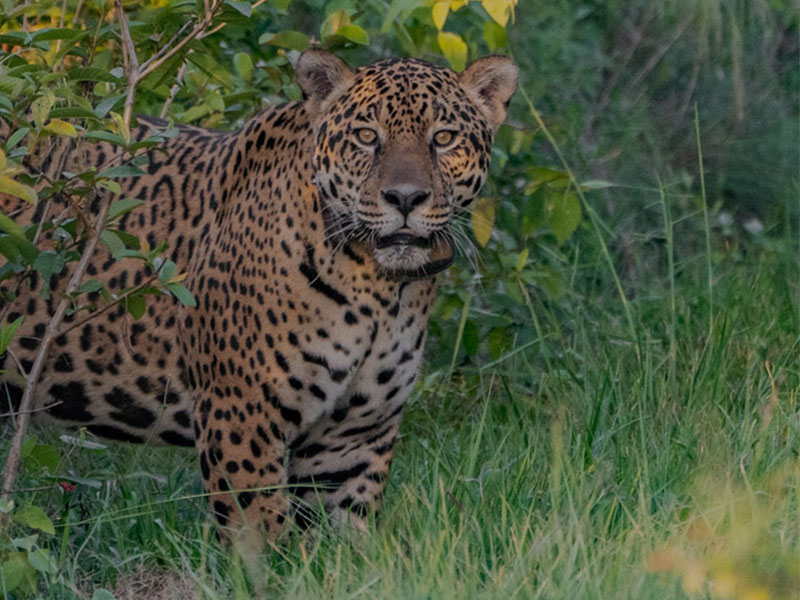
But the work in Iberá is not limited to the reintroduction of the giant otter. Among the species worked on are also the jaguar, the giant anteater, the ocelot, the pampas deer, the collared peccary and the scarlet macaw. These species have suffered major population declines or have become extinct in Corrientes and Argentina.
With this programme, Rewidling Argentina is trying to reverse the biodiversity crisis that has affected the region in recent decades.
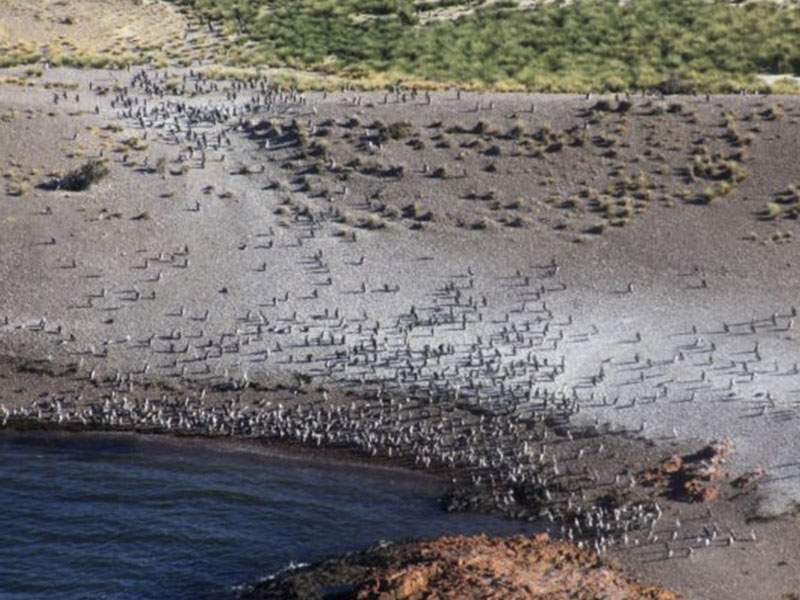
Rewilding Argentina works on other projects such as:
Do you know how you can help to support the protection of the giant otter? With a few simple gestures, you can contribute to protecct this impressive species:
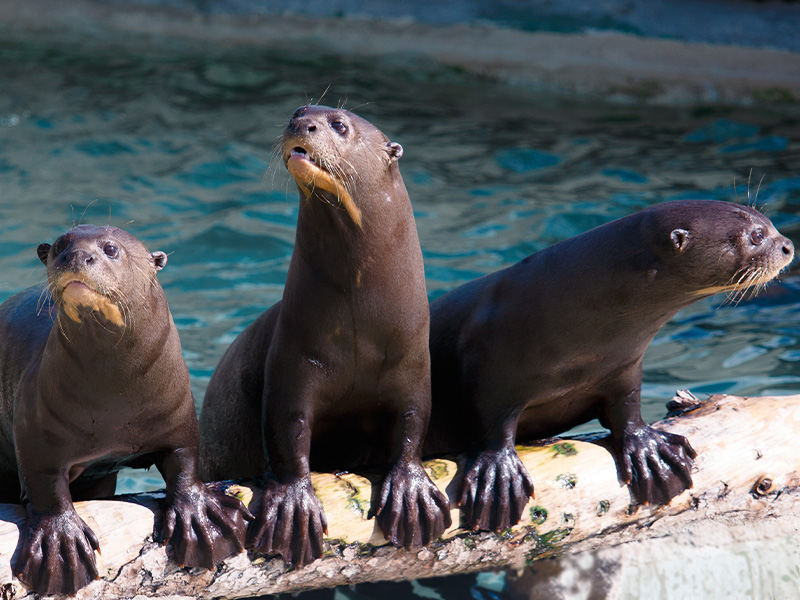
Want to meet our otters?
Images and information: Rewilding Argentina, Zoo Aquarium Madrid.